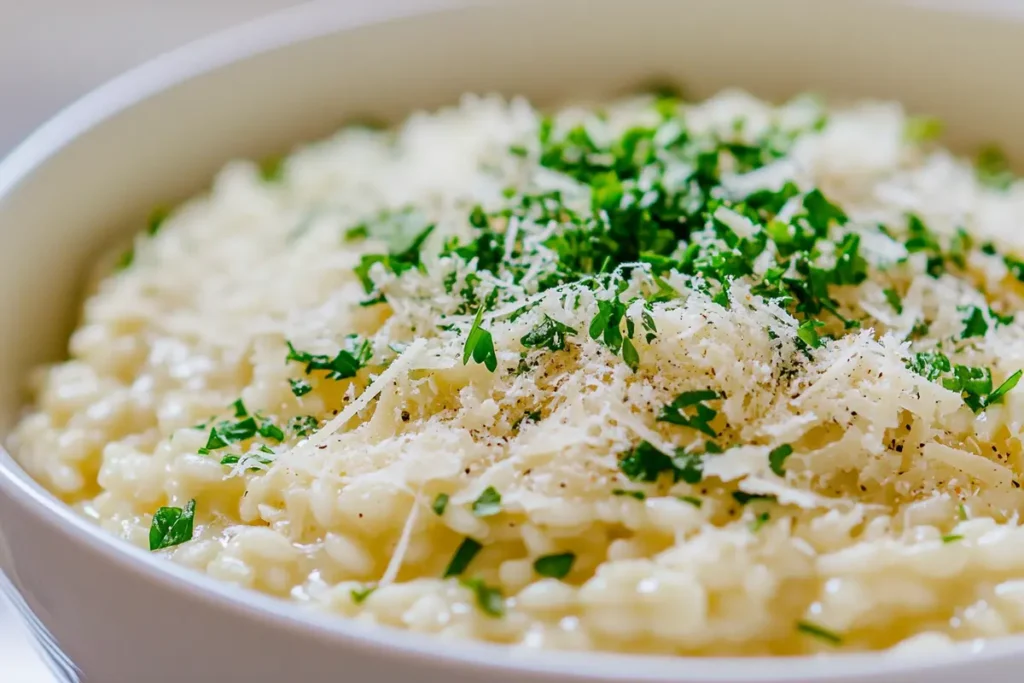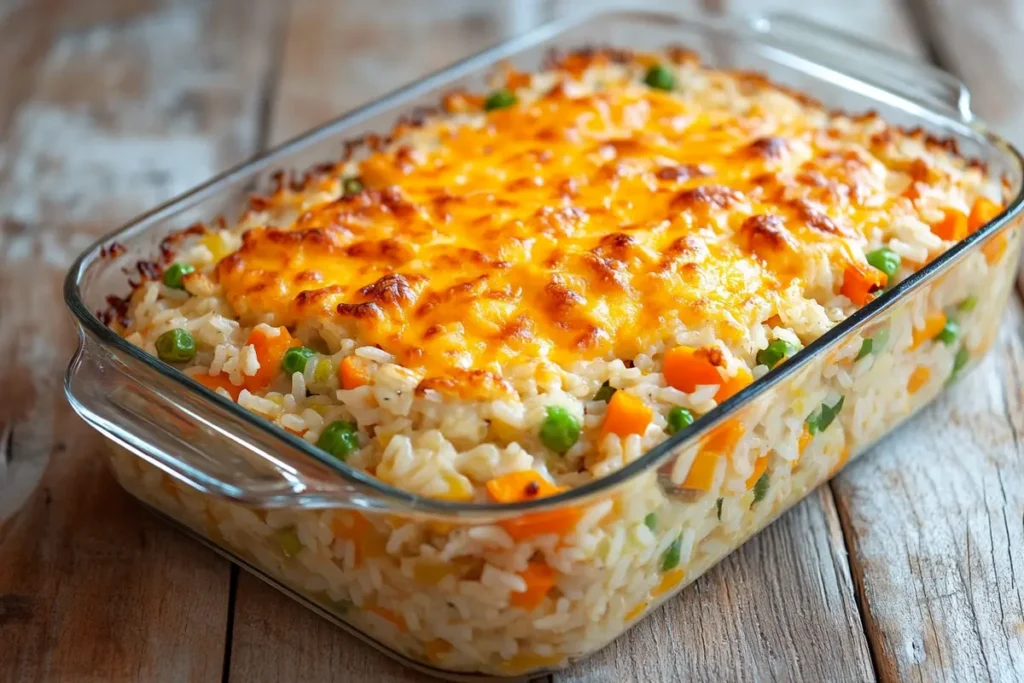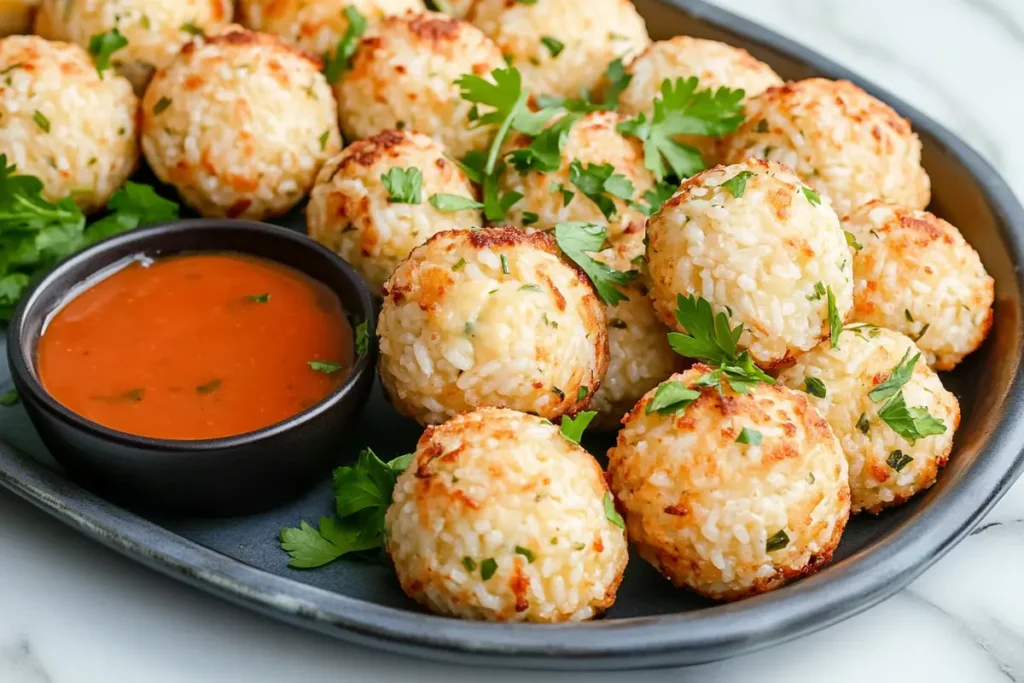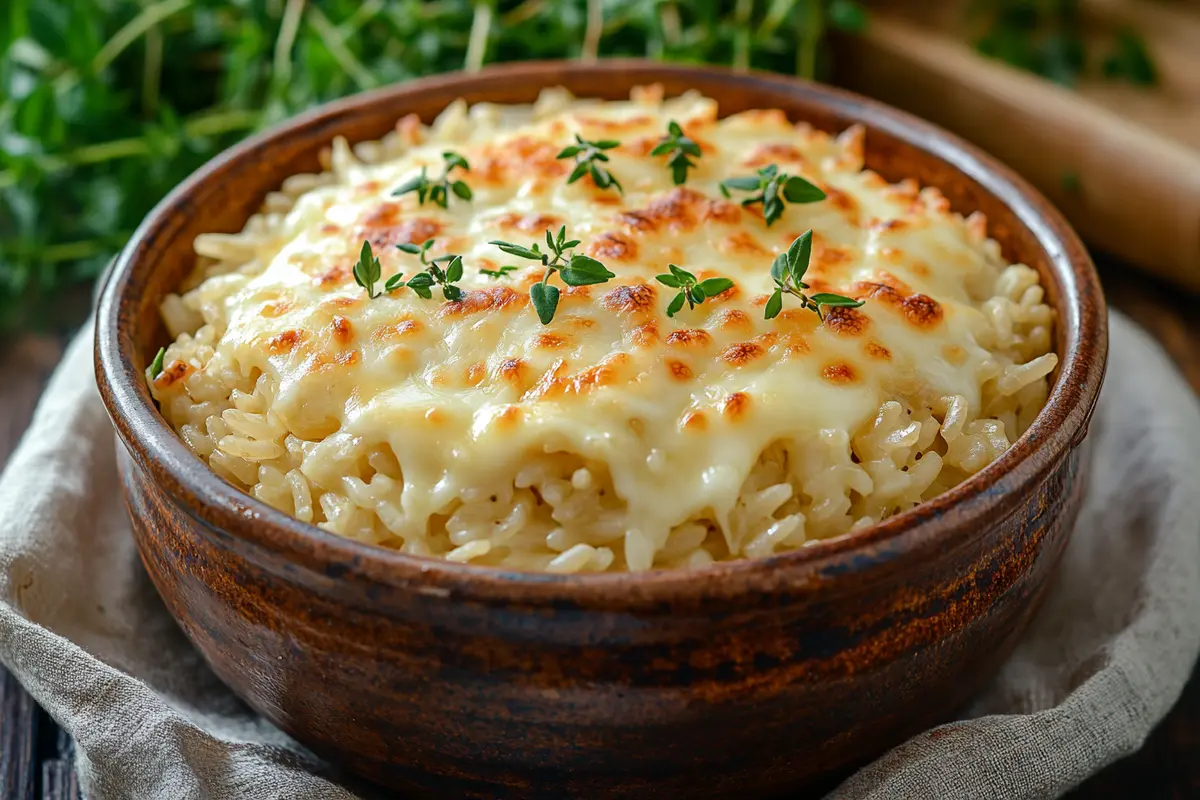When you think about combining cheese and rice, the possibilities seem endless. These two staples, each beloved in its own right, come together in many cuisines to create some truly magical dishes. But what makes this combination so special? Is it the creamy texture of melted cheese complementing the fluffy simplicity of rice? Or is it the nutritional balance that brings a sense of satisfaction to your plate? In this article, we’ll delve into the science, history, and cultural significance of pairing cheese and rice while also offering tips for making the best cheesy rice dishes. Let’s dig in!
The History of Cheese and Rice Combinations
Early Culinary Practices
Rice has been a dietary cornerstone for centuries, originating in Asia and gradually spreading worldwide, while cheese, a creation of early agricultural societies, became a versatile food in many cultures. These staples likely came together in ancient kitchens, resulting in hearty and uncomplicated meals.
In the Mediterranean, grain-based dishes occasionally included soft cheese for added flavor and richness. Likewise, dishes like pilaf and congee may have been enhanced with dairy as trade introduced cheese to new regions. Although direct evidence is limited, the concept of pairing them has deep historical roots.
Evolution in Global Cuisines
As trade routes expanded, so did the pairing of these ingredients. Italian cooks enhanced the creaminess of risotto with cheese, while in the Americas, cheesy rice casseroles became beloved family meals.
In Latin America, queso fresco has been paired with rice in popular dishes like enchiladas. Meanwhile, in Asia, modern fusion recipes have begun incorporating cheese into fried rice, blending traditional flavors with contemporary trends.
This long history shows how adaptable these ingredients are, evolving alongside cultural and culinary changes. Modern techniques are now elevating this pairing to exciting new levels.
The Science Behind Combining Cheese and Rice
Flavor Profiles That Complement Each Other
Have you ever wondered why cheese and rice taste so good together? It all comes down to flavor chemistry. Rice is naturally mild, often serving as a blank canvas for bolder ingredients. On the other hand, cheese brings complexity to the table—its creamy texture, rich umami flavor, and, depending on the type, a slight tanginess. When paired, these two ingredients balance each other beautifully.
Take cheddar, for example. Its sharp, savory notes amplify the subtle sweetness of Jasmine rice, while mozzarella’s mild creaminess pairs seamlessly with short-grain rice in casseroles or risottos. The interplay of textures is also worth noting: the gooey melt of cheese enhances the fluffy or sticky consistency of rice, creating a harmony that’s hard to resist.
How Cheese Alters the Texture of Rice
Cheese doesn’t just flavor rice; it transforms it. When cheese melts, it coats each grain of rice, binding them together in a luscious, creamy matrix. This is especially noticeable in dishes like risotto or cheesy rice casseroles, where the texture becomes almost velvety.
Additionally, the fat in cheese helps to enrich the dish, while its proteins lend a satisfying chewiness. The result? A dish that feels hearty and indulgent, even with minimal effort.
Nutritional Synergy
From a nutritional perspective, the pairing of cheese and rice offers a well-rounded meal. Rice provides carbohydrates—essential for energy—while cheese contributes protein, calcium, and fats. Together, they can keep you feeling full longer and provide essential nutrients.
For those watching their diets, moderation is key. Using lighter cheeses like feta or reduced-fat options can still give you that cheesy goodness without overwhelming the dish. And for vegans, plant-based cheeses paired with whole-grain rice can provide a similar nutritional balance.
Iconic Cheese and Rice Dishes from Around the World
Italian Risotto Variations
Risotto, an Italian classic, is perhaps the most famous example of cheese and rice working in perfect harmony. This dish starts with Arborio rice, slowly cooked in broth until it achieves a creamy consistency. Cheese is often the crowning ingredient, with Parmesan or Pecorino Romano adding sharp, nutty notes that elevate the dish.
Popular risotto variations include:
- Risotto al Parmigiano: A simple yet luxurious dish where Parmesan cheese is the star.
- Four-Cheese Risotto: Combining cheeses like mozzarella, Gorgonzola, Parmesan, and fontina for a rich, complex flavor profile.
- Mushroom Risotto with Cheese: Earthy mushrooms complemented by a generous sprinkling of grated cheese.
Risotto demonstrates how cheese enhances the texture and depth of rice-based dishes, turning something humble into a gourmet experience.

Mexican Queso and Rice Combinations
In Mexican cuisine, cheese frequently enhances rice in various dishes, from sides to entrees. A popular example is Mexican rice, seasoned with tomatoes, spices, and queso fresco or Oaxaca cheese. Another favorite is Arroz con Queso, a creamy dish where rice is mixed with a rich cheese sauce. These meals beautifully balance the mildness of rice with the vibrant flavors of traditional cheeses.
American Cheesy Rice Casseroles
Cheesy rice casseroles are a quintessential comfort food in American households. These dishes often combine cooked rice, shredded cheese, and a creamy binder like milk or sour cream before being baked to perfection.
Favorites include:
- Broccoli Cheddar Rice Casserole: The sharpness of cheddar pairs wonderfully with the earthy flavor of broccoli.
- Chicken and Cheese Rice Bake: A hearty meal combining protein-packed chicken, fluffy rice, and gooey cheese.
- Vegetable Cheesy Casserole: Ideal for vegetarians, featuring seasonal vegetables and a crispy cheese topping.
These casseroles showcase how cheese transforms rice into an indulgent yet easy-to-make dish perfect for family dinners.

How to Perfectly Combine Cheese and Rice in Your Kitchen
Choosing the Right Cheese
Not all cheeses are created equal when it comes to cooking with rice. The best cheeses for cheesy rice dishes are those that melt smoothly, enhance the flavor of the dish, and complement the texture of the rice. Some excellent choices include:
- Mozzarella: Its mild flavor and stretchy melt make it a favorite for casseroles and baked dishes.
- Parmesan: A sharp, nutty cheese that adds a burst of flavor to risottos and rice pilafs.
- Cheddar: With its bold taste, cheddar works well in casseroles and creamy rice dishes.
- Gruyère: Known for its nutty richness, Gruyère elevates rice dishes like no other.
- Queso Fresco or Oaxaca Cheese: Perfect for Latin-inspired rice dishes, offering a soft and creamy finish.
Avoid hard cheeses that don’t melt well or overly processed varieties, as they can affect the dish’s texture.
Cooking Methods for Cheese and Rice
Mastering the combination of cheese and rice often comes down to how you cook the dish. Here are some effective methods:
- Baking: Perfect for cheesy rice casseroles, this method ensures the cheese forms a golden, bubbly crust.
- Stovetop: Ideal for creamy risottos or one-pot dishes, allowing the cheese to integrate seamlessly with the rice.
- Rice Cooker: Believe it or not, you can prepare cheesy rice dishes in a rice cooker by adding grated cheese during the final cooking stage.
- Layering: For a visually appealing dish, layer cooked rice and cheese in a baking dish before heating in the oven.
Each method brings out different textures and flavors, so don’t hesitate to experiment!
Common Mistakes to Avoid
While cooking cheese and rice, a few common errors can hinder your culinary success. Here’s what to watch out for:
- Overcooking the Rice: Overcooked rice becomes mushy and doesn’t hold its texture when combined with cheese. Cook your rice al dente for the best results.
- Using the Wrong Cheese: Some cheeses don’t melt properly and can leave a greasy residue instead of a creamy texture. Stick to tried-and-true varieties.
- Adding Cheese Too Early: If you add cheese while the rice is still cooking, it can break down or burn. Always incorporate cheese at the end for the best consistency.
Nutritional Aspects of Cheese and Rice Dishes
Caloric Content and Balance
Combining cheese and rice creates a deliciously satisfying dish, but it’s important to consider its calorie content. Rice is primarily a source of carbohydrates, while cheese provides protein and fats. Together, they can pack quite a caloric punch, depending on portion sizes and the type of cheese used.
For instance:
- White rice has approximately 200 calories per cup, while brown rice is slightly higher due to its fiber content.
- Cheddar cheese, a popular choice, contains about 115 calories per ounce, and creamier options like Gruyère can go even higher.
To create a balanced meal, pair cheesy rice dishes with vegetables or lean proteins like chicken or tofu. This not only adds nutrients but also helps regulate the calorie load.
Dietary Restrictions and Alternatives
Cheese and rice dishes can be adapted to suit a variety of dietary needs, making them accessible to almost everyone. Here’s how you can adjust your recipes:
- For Lactose Intolerance: Opt for lactose-free cheeses, which are now widely available. Aged cheeses like Parmesan and cheddar often contain less lactose, making them easier to digest.
- For Vegans: Use plant-based cheeses made from nuts, soy, or coconut. Vegan mozzarella and cheddar substitutes melt beautifully and pair well with rice.
- For Gluten-Free Diets: Most cheese and rice dishes are naturally gluten-free, but always check for hidden gluten in sauces or additives.
Healthier Modifications
If you’re looking to make your cheesy rice dishes healthier, consider these tips:
- Use brown rice or wild rice for added fiber and nutrients.
- Swap high-fat cheeses for lighter options like part-skim mozzarella or goat cheese.
- Add plenty of vegetables to increase the dish’s volume and nutrient content without adding too many calories.
By making simple tweaks, you can enjoy the indulgence of cheese and rice while keeping the dish nutritious and balanced.
Cultural Significance of Cheese and Rice Pairings
Regional Preferences Around the World
Cheese and rice have carved out unique roles in cuisines worldwide, reflecting cultural tastes and traditions. Each region puts its own spin on this pairing, creating dishes that are as diverse as they are delicious.
- Italy: Risotto reigns supreme, with Parmesan or Pecorino adding the perfect finishing touch. This dish reflects Italy’s appreciation for simplicity and high-quality ingredients.
- Latin America: Cheesy rice dishes like Arroz con Queso or rice paired with queso fresco showcase the region’s love for comforting, hearty meals.
- United States: From cheesy rice casseroles to mac-and-cheese-inspired bakes, the U.S. has embraced cheese and rice as a go-to for comfort food.
- Korea: While not traditionally part of the cuisine, modern Korean dishes like cheesy kimchi fried rice have gained immense popularity, blending global trends with local flavors.
These regional variations highlight how adaptable cheese and rice can be, fitting seamlessly into both traditional and contemporary recipes.
Festive Occasions and Celebrations
Cheese and rice dishes often take center stage during festive gatherings and holidays. Their rich flavors and satisfying textures make them crowd-pleasers for any occasion.
- In Mexico, cheesy rice is a common feature at family celebrations, served alongside tamales and enchiladas.
- In the U.S., cheesy casseroles are a staple at potlucks and holiday dinners, where comfort food is king.
- In Italy, risotto is often a part of wedding or holiday feasts, with variations like saffron-infused Risotto alla Milanese lending an air of sophistication.
Whether served at casual dinners or grand celebrations, cheese and rice dishes are a testament to how food can bring people together.
Global Fusion Dishes
In recent years, the globalization of food culture has led to the creation of fusion dishes that blend cheese and rice with international influences. Think sushi rolls filled with cream cheese or Indian-inspired biryanis topped with paneer. These dishes push culinary boundaries, combining familiar ingredients in unexpected ways.
Contemporary Twists on Cheese and Rice
Fusion Cuisine: Modern Innovation with Cheese and Rice
With the culinary world increasingly embracing fusion, cheese and rice have found their way into creative, globally inspired dishes. These innovative recipes blend traditional flavors with modern techniques, creating exciting new possibilities for this classic pairing.
- Cheesy Kimchi Fried Rice: Combining the bold, tangy flavors of Korean kimchi with melted mozzarella or cheddar has become a trendy comfort food. The stretchy, gooey cheese offsets the spicy kick of the fermented cabbage for a perfect balance.
- Creamy Cheese Sushi Rolls: In sushi, cream cheese is often paired with sticky rice and seafood to create a rich, velvety texture. Rolls like the Philadelphia roll are a prime example of this fusion approach.
- Mexican-Italian Enchilada Risotto: This dish swaps tortillas for Arborio rice, blending enchilada sauce with Parmesan cheese and mozzarella for a cross-cultural delight.
Fusion cuisine breathes new life into cheese and rice, proving that even traditional staples can evolve into something entirely fresh and exciting.

Vegan and Dairy-Free Alternatives
The rise of plant-based diets has led to the development of vegan-friendly options for cheese and rice. Dairy-free cheeses made from nuts, coconut, or soy can mimic the creamy texture and savory flavor of traditional cheese, opening the door for everyone to enjoy this pairing.
Some popular plant-based adaptations include:
- Vegan Cheesy Rice Bowls: Made with nutritional yeast or cashew cheese for that signature cheesy flavor without any dairy.
- Rice-Stuffed Bell Peppers with Vegan Cheese: A vibrant, healthy dish that combines plant-based cheese with seasoned rice.
- Dairy-Free Cheesy Risotto: Using almond milk and vegan Parmesan substitutes to recreate the indulgent creaminess of classic risotto.
These adaptations allow for inclusivity while maintaining the essence of a great cheesy rice dish.
Frequently Asked Questions
Is it healthy to eat cheese and rice together?
In moderation, it can be a balanced option. Rice offers carbohydrates, while cheese contributes protein and calcium. To make the dish healthier, consider using whole-grain rice, lower-fat cheese, or adding vegetables for extra nutrients.
Can lactose-intolerant individuals enjoy these dishes?
Yes, they can. Lactose-free or aged cheeses, like Parmesan, often contain little lactose. Vegan alternatives are also a great option, offering flavor and creaminess without dairy.
Does cheese work with fried rice?
Surprisingly, yes! Adding melted cheese to fried rice creates a creamy texture that pairs well with crunchy vegetables and savory flavors. For extra spice, try a bold cheese like pepper jack.
Final Thoughts on the Cheese and Rice Combination
The combination of cheese and rice is a versatile and satisfying choice, perfect for experimenting with flavors and textures. Whether you’re preparing a classic dish like risotto or exploring creative twists, this pairing offers endless possibilities to suit any taste. It’s a comforting and adaptable option that can easily become a go-to favorite in your kitchen.

